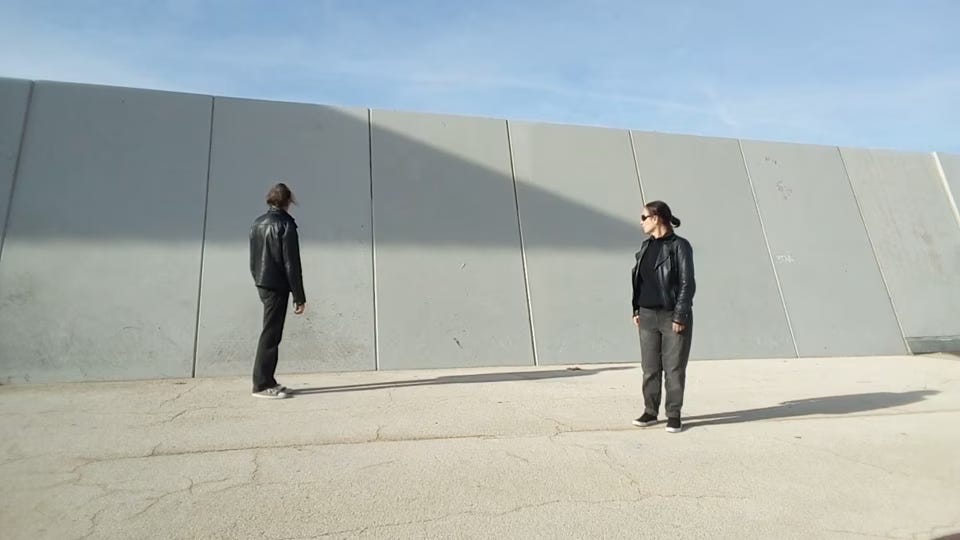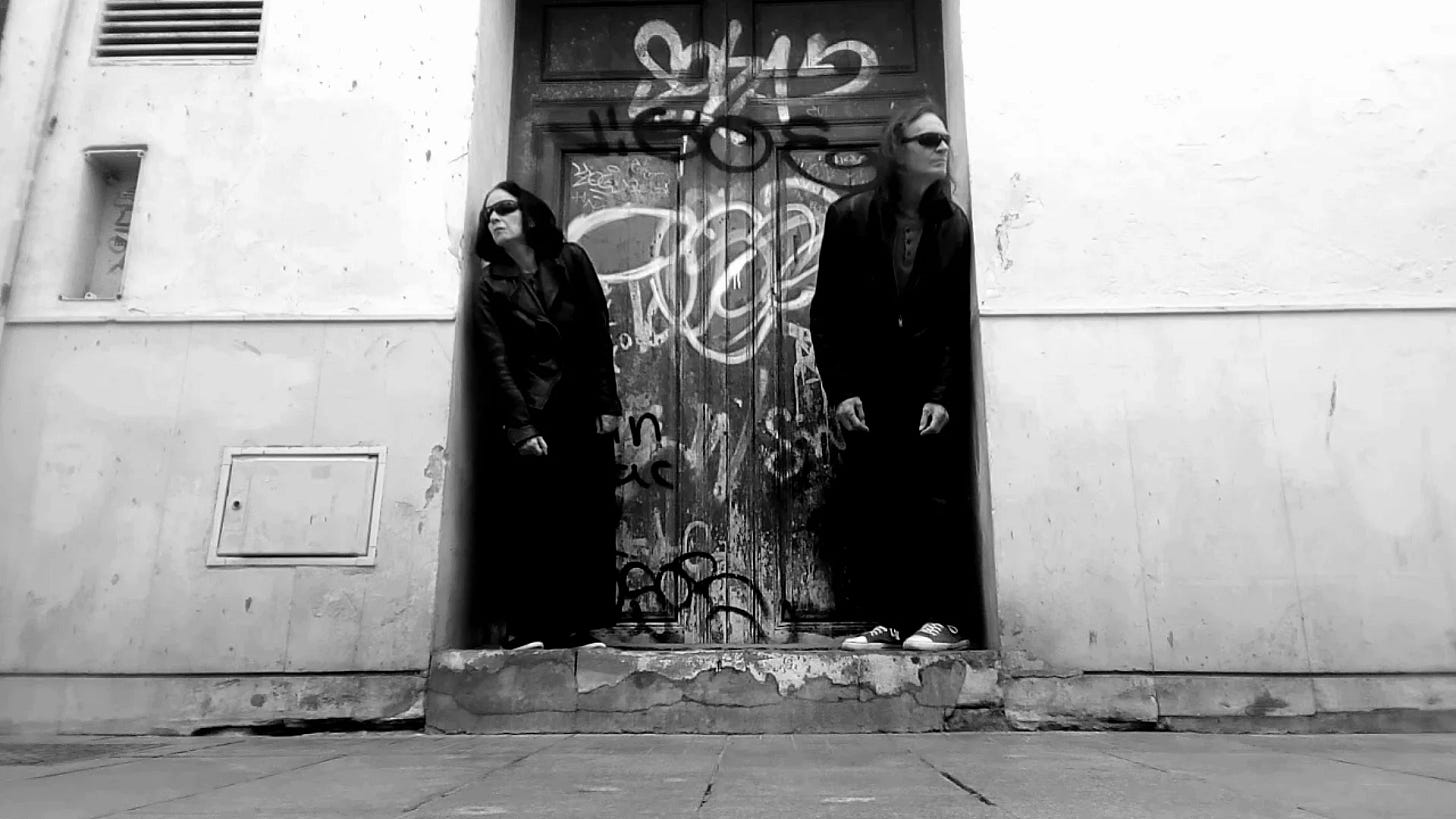Over the coming weeks, I will be writing about some films which I enjoyed at the festival Instants Vidéo in October 2023.
Urban Mantra 8 (2023), a three minute film by Brigitte Valobra and Wald, is a mesmerizing example of dramatic minimalist abstraction. A stationary camera captures a slanting white concrete wall on a bright sunny day. The film consists of a series of short sequences (around 25 seconds each), each showing the two filmmakers positioned in the brightly lit space. They don’t move from their spots, but, quite slowly, their gaze shifts from one plane to another, from across to down, or circularly around the horizon. They are dressed as the quintessential aging urban hipsters, in black sneakers, black jeans, black turtlenecks, black leather jackets, and black sunglasses. Raucous, irregular percussion music by Kuniyoshi Yamada creates an edgy, energetic contrast with the still calmness of the images.
The slanted wall, at an angle both to the floor and to the camera, creates a dynamically asymmetrical space, and the different sequences, in which the two performers further articulate and torque the space with their eyes, seem designed to accentuate these spatial dynamics. Shadows are thrown across the space at acute angles by the sun, low in the sky. The choppy motion of birds across the sky reveals that the footage has quite a low frame rate, like stop motion animation, something we might not otherwise notice, given the extreme slowness of the performers’ movements. The singular power of their quiet, concentrated focus acts as an effective illustration of something theater director Robert Wilson observed many years ago: that a performer can change and create space solely by means of their gaze and attention. Although the two performers are moving their gaze along two different pathways, they use exactly the same timing as one another, highlighting their heightened state of connection. It is this heightened awareness, more than anything, that seems to make the space crackle with energy.
Valobra and Wald explore variations of these ideas in their four minute Four Variations (2023), in which they are seen in front of some grubby, graffiti-covered doorways and stone walls. Their movement here is faster, although still slow, and rather than being focused solely through their eyes it involves waves of Butoh-like energy passing through their torsos, arms, fingers. The movement still seems primarily to register as a response to the spatial qualities of each location: the direction of the light, the tight, enclosed space of the doorways, as if they are physically registering invisible pathways of energy. Once again, the two artists are deeply attuned to one another as well as to the space, moving either in symmetrical opposition or, at the end, a beautifully realized unison. Kuniyoshi Yamada’s music here is much more sparse, mainly cymbals, almost creating a sensation of floating or flying.
It is not for nothing that one of these films is called a “mantra.” These concise pieces of street choreography are a form of meditation, a spiritual practice. Valobra and Wald demonstrate how, through simple awareness and presence, an urban environment which may seem grubby or depressing can be the site of moments of transcendent beauty, even enlightenment. In the end, when we quiet our minds and simply look around at our world, we’re able to access the joy of simply being alive, being human, living in a body, existing in space and time, no matter where we find ourselves. Their hipster attire aligns them with a class of artists who adamantly prefer to live in cities, and not simply because of the anonymity and freedom. The clear, geometric forms of the built environment have an intrinsic charm of their own. Since an ever-growing segment of the world is living in cities, which are continually becoming poorer and more run-down, this kind of spiritual practice has a lot to offer. By offering this practice in relatively short pieces, Valobra and Wald are making this knowledge more accessible, in a world where people have grown allergic to the experience of quiet connection to our surroundings. In the continual assault of urban life, it may be a key survival skill.
My articles on experimental film are freely available to all, but are supported by monthly and annual donations from readers. Please consider becoming a paid subscriber to support my work. Thank you.





